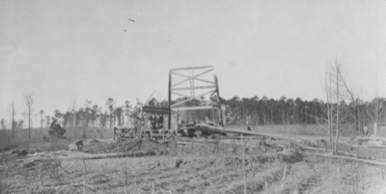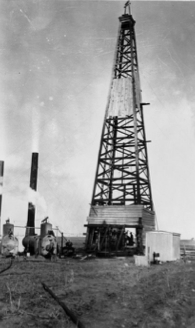Sign up for Flow Kiosk
Already have an account? Sign in now
By registering you are agreeing to our
Terms of Service
Loading Flow



SPUDDING & DRILLING RIGS
B6
DERRICKS:


A derrick is a supporting framework over an oil well. The name comes from Thomas Derrick, who was a hangman in Elizabethan England who executed over 3,000 people using his modified version of the gallows. Derricks are built over the oil well, and all machinery is installed on the site itself. Once constructed, it plays an important role throughout the entire task of oil extraction, from drilling, pumping to storing and transport. Older generation oil derrick pumps had a simple mechanical arrangement, where a large and heavy rod/pole would be used to dig through the surface by repeatedly beating the layers and rock and soil, creating a hold large enough to fit an extraction pipe.
Modern oil rigs use a rotary drilling mechanism to tear through the earth layers to reach the oil reserves located underneath. The derrick structure is responsible for bearing the load of the drilling apparatus, allowing it to carry on the work of oil extraction.
An oil derrick also supports a pumping mechanism used to pump a slurry of mud to cool down the drill as it bites through the earth. As the drill digs deeper, additional sections of pipe need to be added. The height of the derrick tower facilitates this process, and the drilling goes on until the drill reaches the oil reserve. Once that happens, crude oil and natural gas can be pumped out of the inserted pipes.
